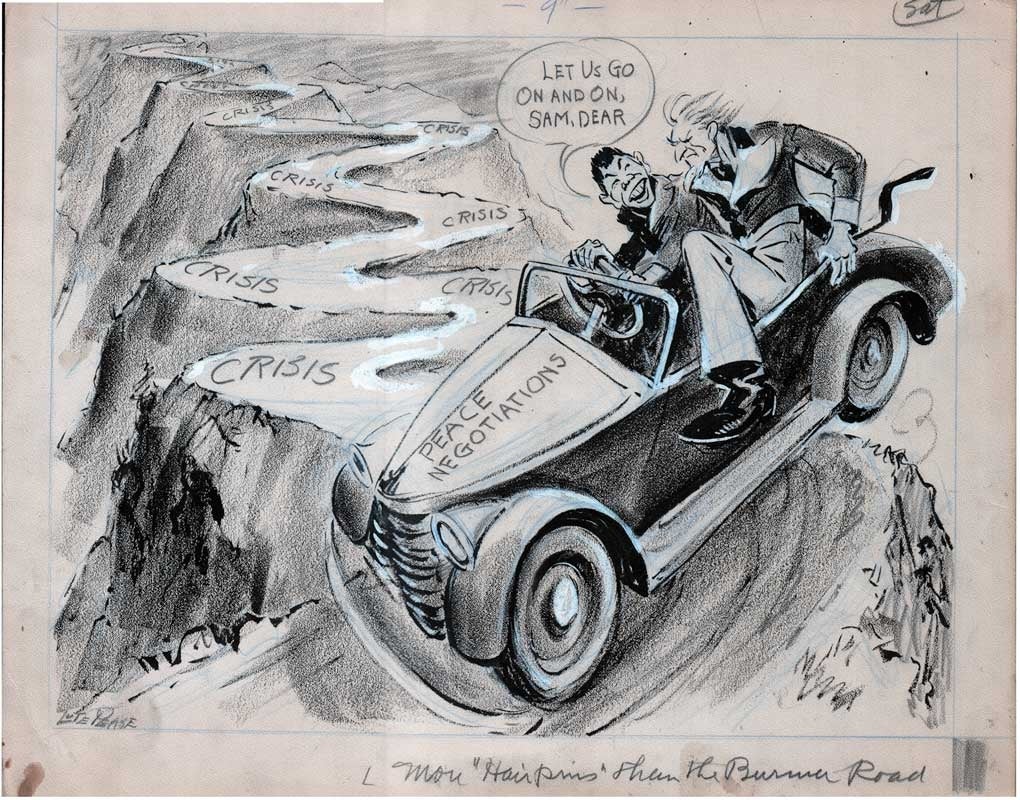 “More Hairpins that the Burma Road” (est. July 1941)
“More Hairpins that the Burma Road” (est. July 1941)
by Lucius Curtis Pease (1869 -1963)
18 x 28 in, ink, pencil and chalk on board
Coppola Collection
This is a challenging cartoon to date. It depicts a still-open Burma Road and (rocky) negotiations happening between Japan and the US. After Pearl Harbor, there were no peace overtures, so I say this is pre-war.
The Burma Road was built during the Second Sino-Japanese War, during 1937-38 1938. After the bombing of a USS ship on the Yangtze River in December 1937, the US and its allies began sending assistance to China. The British used the road, famously depicted as a series of hairpin turns up a steep slope, to transport materiel to China before Japan was at war with the British, and the US used the Burma Road to transport Lend-Lease (March 1941) materiel to the Chinese. The Japanese overran Burma in 1942.
Japan signed the Tripartite Pact with Germany and Italy on September 27, 1940 thereby linking the conflicts in Europe and Asia. Then in mid-1941, Japan signed a Neutrality Pact with the Soviet Union. The Japanese continued their aggression in SE Asia, and the US began taking preventative measures. We halted negotiations with Japanese diplomats, instituted a full embargo on exports to Japan, particularly steel and oil, froze Japanese assets in U.S. banks, and sent supplies into China along the Burma Road.
Although negotiations restarted after the United States increasingly enforced its embargo against Japan, they made little headway. Diplomats in Washington came close to agreements on a couple of occasions, but pro-Chinese sentiments in the United States made it difficult to reach any resolution that would not involve a Japanese withdrawal from China, and such a condition was unacceptable to Japan’s military leaders.
In autumn of 1941, President Roosevelt, Secretary of State Cordell Hull, Prime Minister Fumimaro Konoye, and U.S. Ambassador to Japan Joseph Grew were on the verge of arranging a meeting in Alaska, but the parties could not come to an agreement on terms.
Faced with serious shortages as a result of the embargo, unable to retreat, and convinced that the US officials opposed further negotiations, Japan’s leaders came to the conclusion that they had to act swiftly. US leaders doubted that Japan had the military strength to attack US territory. On December 7, 1941, in an attempt to goad the US into lifting its sanctions, the Naval Base at Pearl Harbor was attacked.

